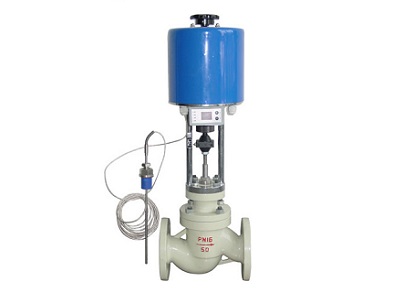The self-operated temperature control valve is composed of a temperature sensor and a control valve. It is an energy-saving product that does not require external energy and uses the temperature change of the controlled medium to automatically adjust. The product is suitable for various gases, steam, hot water, Automatic temperature control in various heat exchangers where oil, etc. are the medium. It has the advantages of wide temperature setting range, convenient adjustment, continuous temperature setting, over-temperature and over-planting protection, and convenient temperature setting. Widely used in urban heating, heating systems and electric power, petroleum, metallurgy, pharmaceuticals, boilers and other industrial sectors.

Self-operated temperature control valve product features
This valve does not require external energy such as electricity or compressed air, and is reliable. The temperature-sensing liquid expands evenly, proportional adjustment control, high control accuracy, stable operation, and effective energy saving. The balanced valve body design enables the valve to operate under larger pressure differences. Work, linear or equal percentage flow characteristics, temperature setting is simple and convenient to operate, small in size, light in weight, and easy to install.
Working principle of self-operated temperature control valve
The self-operated temperature control valve can be divided according to the form of action; temperature control type for heating, temperature control type for cooling, and confluence (split) temperature control type. It is adjusted by the principle that the temperature-sensing liquid expands when heated, contracts when cold, and the liquid is incompressible. .Insert the temperature sensor into the medium whose temperature needs to be controlled. When the temperature of the medium rises, it will feel the expansion of the warm liquid, the force overcomes the resistance of the spring, pushes the valve core to move downward, and the valve tends to be closed, thereby reducing the heat medium. On the contrary, when the temperature of the medium is lower than the set temperature, the temperature-sensing liquid shrinks, and the return spring pushes the valve core to open, increasing the flow rate of the heat medium, so that the temperature of the controlled medium tends to rise. The temperature value is always kept within the allowable range of the set temperature.
 WENZHOU WEITUO VALVE CO., LTD.
WENZHOU WEITUO VALVE CO., LTD.